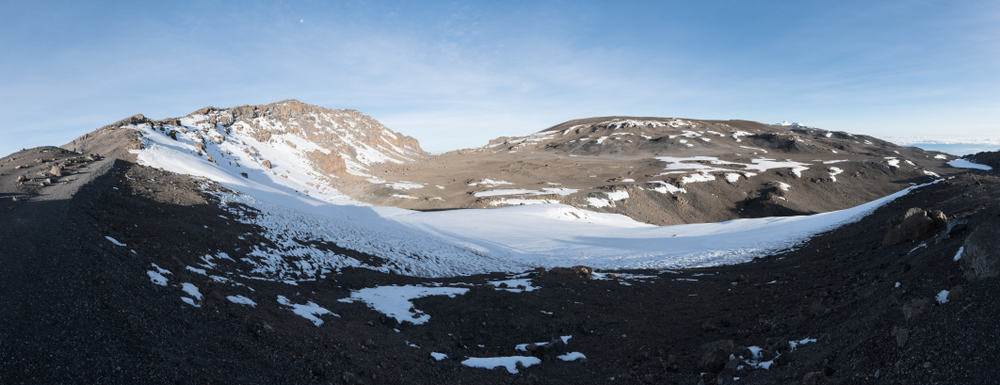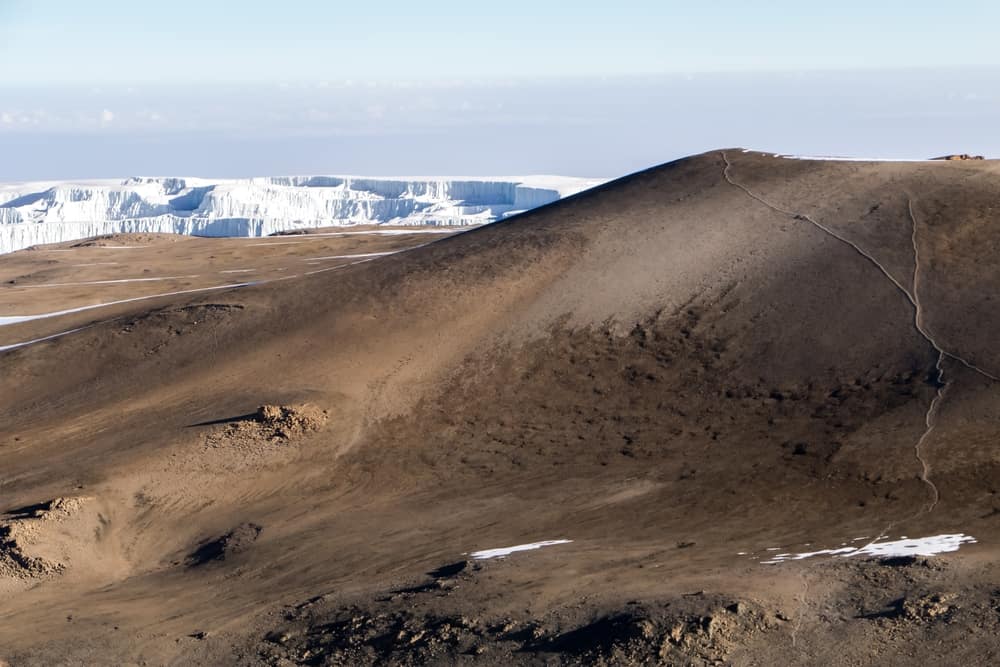
The Furtwangler Glacier, located near the summit of Mount Kilimanjaro, is one of the last remnants of the once-vast ice fields that covered Africa’s tallest mountain. At an altitude of approximately 19,000 feet (5,800 meters), it is a key feature of Kilimanjaro’s arctic zone.
The glacier is named after Walter Furtwängler, a German climber who was part of the second successful expedition to reach Kilimanjaro’s summit in 1912. Like other glaciers on the mountain, it formed thousands of years ago during a cooler and wetter period. At one point, glaciers covered much of Kilimanjaro’s summit, including the Kibo and Mawenzi peaks.

Furtwangler Glacier’s Rapid Decline
By the early 20th century, Kilimanjaro’s glaciers began to recede, and today, Furtwangler represents one of the few remaining ice masses on the mountain.
Once larger and more expansive, the glacier has seen dramatic shrinking due to rising temperatures, reduced snowfall, and increased solar radiation at high altitudes. In 1976, Furtwängler covered 425,000 square feet (39,500 square meters). By the early 21st century, it had shrunk to about 135,000 square feet (12,500 square meters).
Studies estimate that more than 80% of Kilimanjaro’s ice cover has disappeared in just over a century, with the remaining glaciers projected to disappear completely within the next decade or two if current trends continue. This rapid retreat has garnered attention from scientists, exposing the global impacts of climate change.

The end of Kilimanjaro’s glaciers marks a significant environmental and cultural shift, as the sight of the mountain’s ice-covered peak has long been a hallmark of this East African landscape.
What is Causing Kilimanjaro’s Glaciers to Disappear?
The decline of Kilimanjaro’s glaciers is primarily due to climate change. As temperatures rise globally, high-altitude glaciers such as this one are especially vulnerable. Decreased snowfall and increased sublimation (where ice turns directly into water vapor) contribute to the glacier’s shrinkage. Unlike many glaciers that melt and create rivers, Kilimanjaro’s glaciers don’t have much meltwater because they primarily lose ice through sublimation due to the dry air at the summit.
While Kilimanjaro’s glaciers have existed for thousands of years, the current climate conditions are preventing them from replenishing, and experts predict that Furtwangler Glacier may disappear entirely by 2030.
Viewing the Glacier While Climbing Kilimanjaro

For those climbing Kilimanjaro, reaching the summit offers a chance to see the remaining ice fields, including Furtwangler Glacier. From Uhuru Peak, the highest point of Kilimanjaro, climbers can see the glacier below against the otherwise dark, rocky terrain. Its proximity to the summit makes it one of the highest glaciers in Africa. The existence of glaciers are uncommon at such latitudes.
For more adventurous folks, there is a way to sleep close to Furtwängler Glacier by staying at Crater Camp (18,865 feet / 5,750 meters). Crater Camp carries more risk of altitude sickness, so it is typically used by more experienced climbers who know they can acclimatize well. This camp gives climbers the chance to see the glacier up close, explore the area and the ash pit.

However, due to the glacier’s continuous retreat, climbers may not be able to see glaciers on Kilimanjaro in the future. As it disappears, the once ice-capped summit of Kilimanjaro will lose its iconic white cap completely.
Don’t miss your chance to see Furtwangler glacier and the mountain’s last remaining ice fields. Book your Kilimanjaro climb today before they vanish completely.
